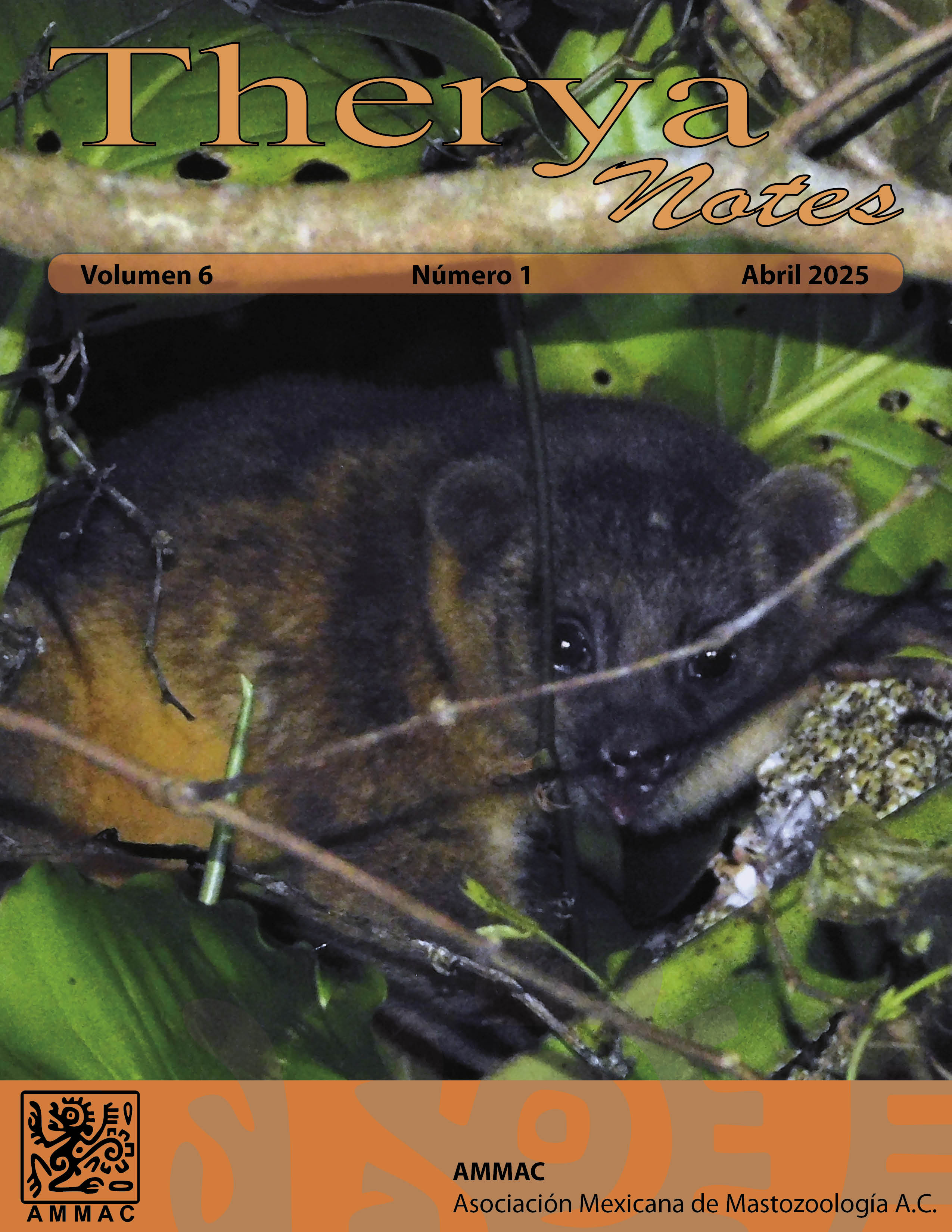Terrestrial nesting behavior in the white-nosed coati, Nasua narica: evidence from a ground-level nest
DOI:
https://doi.org/10.12933/therya_notes-25-190Keywords:
arboreal nests, dry forest, mammals, Palo Verde National Park, procyonidsAbstract
White-nosed coati, Nasua narica, ranges from Arizona, USA, to northwestern Colombia, from sea level to 2,879 m. It exhibits both terrestrial and arboreal behaviors, with reproductive activities typically occurring in trees. During the breeding season, bands and solitary adult males construct nests in trees, while pregnant females leave the group to give birth and raise their young in secluded tree nests. From 2016 to 2018, we conducted a mammal census in Palo Verde National Park in northwestern Costa Rica, visiting each semester for a 3-day survey. This region experiences a dry season from December to April, sometimes extending longer. During a census, we observed a ground nest with pups. We took photographs, documented notes, and measured 1 of the kits. In April 2018, we observed a female white-nosed coati with 3 kits, estimated to be under 11 days old, beneath a fallen log. The kits were partially exposed, and the female was moving them into the shade. Measurements (length in mm) of 1 kit, as all 3 appeared similar in size, were: head-body = 136, tail = 110, ear = 7, left hind foot = 26. Ground nesting by coatis may reduce intraspecific competition, especially in deciduous dry forests where few trees retain foliage. A ground nest might also be less visible than a tree nest, reducing predation risk and offering an energy-efficient option for a foraging female. In Costa Rica's dry forest, ground nesting could signal an adaptive response to particular environmental conditions.
Downloads
Published
How to Cite
Issue
Section
License
THERYA NOTES is based on its open access policy allowing free download of the complete contents of the magazine in digital format. It also authorizes the author to place the article in the format published by the magazine on your personal website, or in an open access repository, distribute copies of the article published in electronic or printed format that the author deems appropriate, and reuse part or whole article in own articles or future books, giving the corresponding credits. The Creative Commons CC BY-NC-SD license is used.![]()















